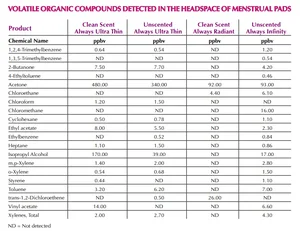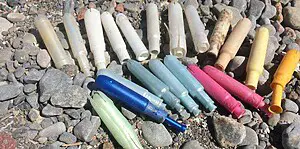Reusable pads for periods are skyrocketing in popularity.
Reusable period pads essentially act like any other piece of clothing. You use them, wash them, dry them and then use them again.
Makes sense, right?
Not only do reusable pads make sense from a sustainability and environmental perspective, but they’re beneficial in many other ways too.
Women and girls often try reusable pads for ethical, environmental and sustainable reasons but stick with them because they’re genuinely comfortable, easy to use, and good for the body.
Here are 8 fantastic benefits of using reusable pads for periods:
Table of Contents
1) Comfort
The woman will have over 480 periods from about the age of 12 to between the ages of 40 and 58, on average. Each period lasts 2 to 7 days, 24 hours a day.
Comfort, then, is paramount.
A few things are needed to make pads comfortable. First, there’s the fit, the material, and how well they perform.
Reusable pads are usually made from natural, soft materials, like cotton fleece. These are absorbent and comfortable. Disposable pads, contrastingly, often use synthetic materials instead and whilst these might seem good for the body, they’re usually not.
Women with sensitive skin might already know how uncomfortable disposable pads can be. Synthetic materials don’t just trigger irritation but also contain harmful chemicals, including several carcinogenic chemicals.
Researchers recently found pads manufactured by the disposable pad brand Always to contain quite a scary list of chemicals, including styrene, acetone and chloroform.

Reusable pads, however, are typically made from super-comfortable natural materials, and why shouldn’t they be?!
They are better for the body and feel soft against the skin, don’t chafe, and can be worn day and night without irritation.
2) Cost
Cost is big – reusable pads are cheaper in the long term.
The average woman in the UK might spend £13 a month on sanitary products alone. That doesn’t even include other products and costs relating to periods, whether pain medication or underwear.
Even if this doesn’t seem like a lot to you each month, it still amounts to thousands of pounds over your life. It’s not like you get much for your money, either – nothing you can keep anyway!
For many, though, these costs are very prohibitive, and sanitary products are unaffordable. As a result, many women and girls in developing countries simply can’t afford sanitary products and are forced to improvise.
Even in the UK, Europe and North America, period poverty is rife, and in the UK, studies have found that 1 in 10 girls have been unable to afford sanitary products at some point.

For any girl or woman, reusable pads save money.
For some, though, they are a lifeline that lets them access proper sanitary products on a budget that they can afford.
3) Convenience
Reusable pads are convenient as they’re always under your control.
You buy them, maintain them, re-use them, and replace them when you need to. They normally last 5 to 10 years, so you won’t have to often head to the shop to buy more often.
In fact, once you’re stocked up with a few different types of reusable pads (e.g. light, medium and heavy flow), you won’t have to think about buying more for a long, long time.
They’re not packaged in plastic, are lightweight, and since you don’t need to dispose of them, you don’t need to worry about flushing them down toilets or finding suitable bins to dispose of them in public.
Instead, you simply seal them up safely in a secure plastic bag, and you’re good to go. Highly convenient when travelling!
Something else worth mentioning here is that reusable pads don’t disintegrate like disposable pads, e.g. when they get wet. You can wear them when swimming, in heavy rain, hiking, camping, etc.
4) Quiet to Change
Women and girls shouldn’t feel ashamed of changing their pads. Still, discretion is important for many and in countries where periods are discriminated and can be vital for women to remain discrete during their periods.
Reusable pads are made from silent, noiseless cotton and fleece and don’t come in plastic packaging.
This is handy when changing pads in a rush when in public toilets. Faffing about with plastic packaging can be stressful. Reusable pads are simple and quiet to use and change.
5) Cleanliness
Cleanliness and hygiene are one of the most important properties of sanitary products.
Many women are sceptical about the cleanliness of reusable products. For example, people often think period blood to be dirty or nasty, and feel that once dirtied, you should throw sanitary products away.
This is a longstanding myth, and studies have pointed out how period blood is not more ‘dirty’ than any other blood. On the contrary, period blood comes from a part of the body so clean and hygienic that it can support the growth of a baby…!
Moreover, there is absolutely nothing wrong with cleaning reusable pads, and there is no evidence to suggest that they are in any way ‘unclean’. They are at least as clean as disposable pads.
In Women’s Health Mag, Gynaecologist Dr Anne Henderson says that despite what most people think, conventional disposable pads are not sterile, and reusable pads are no different.
Yes, you have to clean reusable pads and wash them properly, but this effectively cleans them ready for re-use, and so long as they are washed and dried properly, they are as sterile as a new disposable pad.
6) Safe
Reusable period pads are safe because they’re usually made from natural materials.
Disposable sanitary pads contain many harmful and potentially irritant chemicals, and studies have linked these to dermatitis, dryness and even worsening menstrual symptoms such as cramping. Some pads even contain scents and other chemical agents, which exacerbate these issues.
Contrastingly, reusable pads are made from organic, natural and recycled materials.
Reusable pads stick it to these silly marketing terms; ‘high-tech’, ‘super-absorbent’ and ‘scented’.
They’re plain, simple and natural – which is a good thing!
7) Eco-Friendly
This is perhaps one of the biggest reasons why women and girls switch to reusable pads.
Disposable pads and tampons are some of the least eco-friendly consumable items going. They make an enormous contribution to the landfill, with a remarkable 45 billion ending up in landfill each year. In addition, many disposable pads and tampons end up in the sea, contributing to the destruction of marine life and water pollution.

The same synthetic chemicals used to market disposable pads as ‘super-absorbent’ and all the rest of it are the same synthetic compounds that make them non-biodegradable and poisonous for the environment and your skin.
It’s not just the pads but the packaging and materials used to manufacture them.
Disposable pads have a large carbon footprint and are made with non-recycled plastics and other synthetic components.
Switching to reusable pads greatly decreases your environmental impact. The more people who switch, the more difference it makes.
The positive impact of switching to reusable pads is immediate, but you’ll avoid contributing thousands of pads to landfills over a lifetime.
8) Support Women in Need
Reusable pads have a transformative effect on women in dire need of proper sanitary products.
In many parts of the world, access to disposable pads is very low or non-existent. As a result, women either can’t get hold of disposable pads regularly or can’t afford their ongoing costs.
Reusable pads are different. Once supplied, reusable pads can last a decade. After that, they simply need to be maintained.
There is just a single one-off cost (or when granted by charity, they are free). After that, women in need won’t need to restock their pads for many years and will not need to worry about the ongoing costs of their periods.
Reusable pads can free women and girls from the shackles of period poverty, or period insecurity, where women worry month-to-month about how they will afford expensive disposable pads.
By switching to reusable pads with Trade for Aid, you can contribute to women in need of sanitary products. In addition, for every pack you buy, we will contribute a pack to conflict zones, refugee camps or natural disaster zones.
We are nonprofit and reinvest everything into menstrual education programmes in West Africa.
Reusable Pads FAQs
Are Reusable Pads Hygienic?
Yes. Cleaning reusable pads properly means they’re perfectly hygienic for re-use. This follows the same principle as washing anything that has close contact with the body. For example, we wash underwear, clothes, socks and other fabric items such as handkerchiefs, so why not period pads?
To learn how to properly wash period pads, head here.
How Do I Stop My Reusable Pads from Smelling?
If you’ve followed the correct procedure for washing and drying your reusable pads, then they should not smell. If you have problems with your reusable pads smelling, try soaking them for longer in cold water mixed with tea tree oil, baking soda or a small quantity of hydrogen peroxide before putting them in the washing machine.
Can You Swim in Reusable Pads?
Reusable pads will not disintegrate like disposable pads, and are much safer and more comfortable to swim in. Also, since they’re made from natural materials, they won’t leak out harmful synthetic chemicals when they get wet, as many disposable pads do.
Are Reusable Pads Healthy?
One of the most compelling reasons to switch to reusable pads is because they’re healthier for the skin and body. Disposable pads often contain harmful chemicals such as dioxin and styrene that seep out during use.
Some of these chemicals can cause serious skin irritation, dryness or even worsening period cramps. Reusable pads are usually made from organic natural materials such as cotton fleece, and are healthier for the body.
Are Reusable Pads Hypoallergenic?
Many women develop allergies to period pads and have to switch between brands. Even brands designed for sensitive skin can cause allergies. Reusable pads are typically made from cotton, which is generally hypoallergenic and extremely unlikely to cause skin irritation. They are a great choice for women and girls susceptible to skin irritation and allergies.
How Do You Clean Reusable Pads?
Reusable pads are best soaked in cold water before washing in a machine. A standard 40-degree wash should do the trick. You can also let them soak in cold water mixed with tea tree oil or other natural or mild disinfectants before throwing them in the washing machine.
For an in-depth guide on how to clean reusable pads, head here.
